Labeling Requirements for Home Cleaning Products to Stay Compliant
In just the last few years, the cleaning product industry has experienced a major boom in demand. Propelled by the increased need for cleaning supplies due to the Covid-19 pandemic, cleaning product manufacturers have been generating significantly more profit than in previous years.
Similar to the larger chemical manufacturing industry, the cleaning product industry faces strict federal regulations and distributor guidelines regarding what codes and labels must be included on product packaging. These requirements range from basic use instructions and allergy warnings to traceable variable data such as lot codes, serial numbers, barcodes, and more.
To those new to the industry, the labeling requirements for cleaning products may appear intimidating at first, especially when trying to figure out which agency governs your specific product that is being manufactured. Fortunately, once you understand the basic regulations and familiarize yourself with today’s industrial marking options, code compliance becomes within reach.
Here’s what you need to know.
Essential Labeling Requirements for Cleaning Products
When developing cleaning product labels, it’s important to be aware of the different regulations and labeling guidelines that apply to your specific goods. These regulations and labeling requirements vary depending on the intended use and ingredients in the product. Cleaning label requirements are largely shaped and enforced by the following entities:
- The Occupational Safety and Health Administration (OSHA)
- Environmental Protection Agency (EPA)
- State laws
- Distribution partners
If the product also meets the criteria to be considered a pesticide (e.g., it claims to remove allergens, kill pests, sanitize/sterilize surfaces, etc.), additional labeling requirements from the EPA will come into effect. See this article on the Federal Insecticide, Fungicide, and Rodenticide Act (FIFRA) for more information.
In this article we are going to focus on the OSHA’s cleaning product labeling requirements as laid out in the Administration’s Hazard Communication Standard (HCS). According to this standard, all cleaning product labels must contain the following information:
- Contact Information of the Chemical Manufacturer/Importer/Responsible Party: This information must include a name, address, and phone number.
- Product Identifier: This information communicates the identity of the product to the consumer. The manufacturer/packager can identify the product by either its chemical name, code number, or batch number.
- Signal Word: This word communicates how severe of a hazard the product poses to the user. Only two words are used as signal words: “Warning” and “Danger.” “Warning” communicates that the chemical is potentially harmful to the user, while “Danger” communicates that the chemical poses an immediate hazard.
- Hazard Statements: These statements describe in detail the different hazards that the product poses to the user (e.g., “Contains Butoxypropanol which contains material that may cause adverse reproductive effects and may adversely affect the developing fetus based on animal data”, etc.).
-
Precautionary Statements: These statements recommend measures that minimize or altogether prevent the hazardous issues associated with the product. Precautionary statements come in four categories:
- Prevention statements (i.e., recommendations to minimize exposure)
- Response statements (i.e., directions on how to respond to accidental spillage or exposure)
- Storage statements (i.e., storage best practices to guarantee user safety and a long product lifespan)
- Disposal statements (i.e., directions on how to dispose of the chemical to avoid damaging the environment and harming others)
- Pictograms: Pictograms are eye-catching icons that communicate the danger posed by the product. They are not mutually exclusive and come in nine categories.
In addition to these required label elements, OSHA includes guidance in the HCS regarding optional supplemental information such as expiration dates and fill dates.
While elements like expiration dates and fill dates are not required by OSHA, they are frequently required by state-level laws and distribution networks. For example, California’s Cleaning Product Right to Know Act of 2017 contains a number of label measures, including ingredient lists and manufacturing dates. Similarly, most distribution channels require variable data markings such as lot codes, fill/expiration dates, and serial numbers to appear on labels for traceability purposes.
While the label elements required in the HCS can easily be included in stock label designs, variable data marking by nature must be applied on a batch-by-batch basis. This requires the use of specialty marking equipment.
How To Comply With Variable Data Labeling Requirements
After designing a label that complies with OSHA and state-level labeling regulations, it’s time to focus on how to mark the label with essential variable data. Although companies can choose to do this in a few ways, the most common method is to outfit one’s production line with an industrial printer.
The two most common printer choices include:
These two types of printers are frequently chosen to mark chemical products due to their compatibility with a wide range of materials and fast marking speeds. However, despite both falling under the category of “inkjet printer,” their construction design and operating principles are quite different.
CIJ printers like the DuraCode Touchscreen are built for long periods of uninterrupted coding. Large and often weighing close to 100 pounds once filled with printer fluid, CIJ printers internally circulate highly pressurized streams of ink to always be ready to expel a passing package with a text marking or machine-scannable barcode. CIJ printers are also well-adept at printing curved surfaces due to their 1-3 inch printing distance.
TIJ printers like the Anser U2 Pro-S are much smaller than CIJ printers and generally weigh around five pounds. This small size makes them easy to install onto lines as well as move into different printing positions. They also often cost less than CIJ printers, making them more accessible to smaller-size operations.
On the other hand, they are generally incapable of matching the printing speeds offered by CIJ printers (e.g., the DuraCode CIJ maxes out at 320 m/min., while the Anser U2 Pro-S maxes out at 120 m/min.).
However, many newer TIJ models, such as the Anser X1 are just as well-suited for production line coding as CIJ printers. For example, the Anser X1 excels at industrial cleaning product coding due to its:
- 300m/min printing speed
- 600 x 600 max DPI resolution
- 1.97-inch max print height
- Compatibility with both porous and non-porous substrates
- Ability to simultaneously control two different production lines
If you’re unsure of which printer option will work best for your operation, we recommend seeking out professional guidance from an industry expert. Why not reach out to an InkJet, Inc. solutions engineer?
Searching for New Labeling Equipment? InkJet, Inc. Has You Covered
In today’s world of stringent labeling regulations and far-reaching supply chains, cleaning product manufacturers must be able to comply with all labeling requirements. Fortunately, if you understand the necessary label elements and have the appropriate marking equipment installed in your facility, code compliance isn’t difficult to achieve.
At InkJet, Inc., we have helped companies across the manufacturing and packaging spectrum comply with labeling laws for over thirty years. If you are unsure of how to best meet modern labeling requirements, our team of experts can help you find the right combination of printing hardware and ink to meet your needs. Contact us today to learn more.
To learn more about the labeling requirements for cleaning products and how to comply with them, contact us online today, text us at 1(832) 925-3890 or call 1(800) 280-3245.



